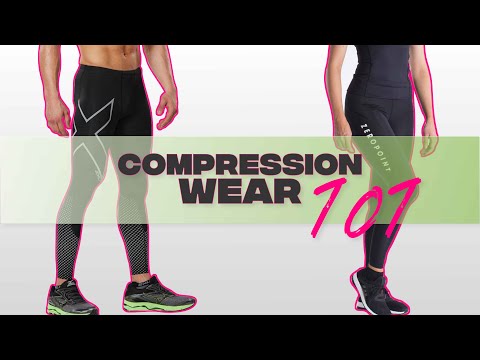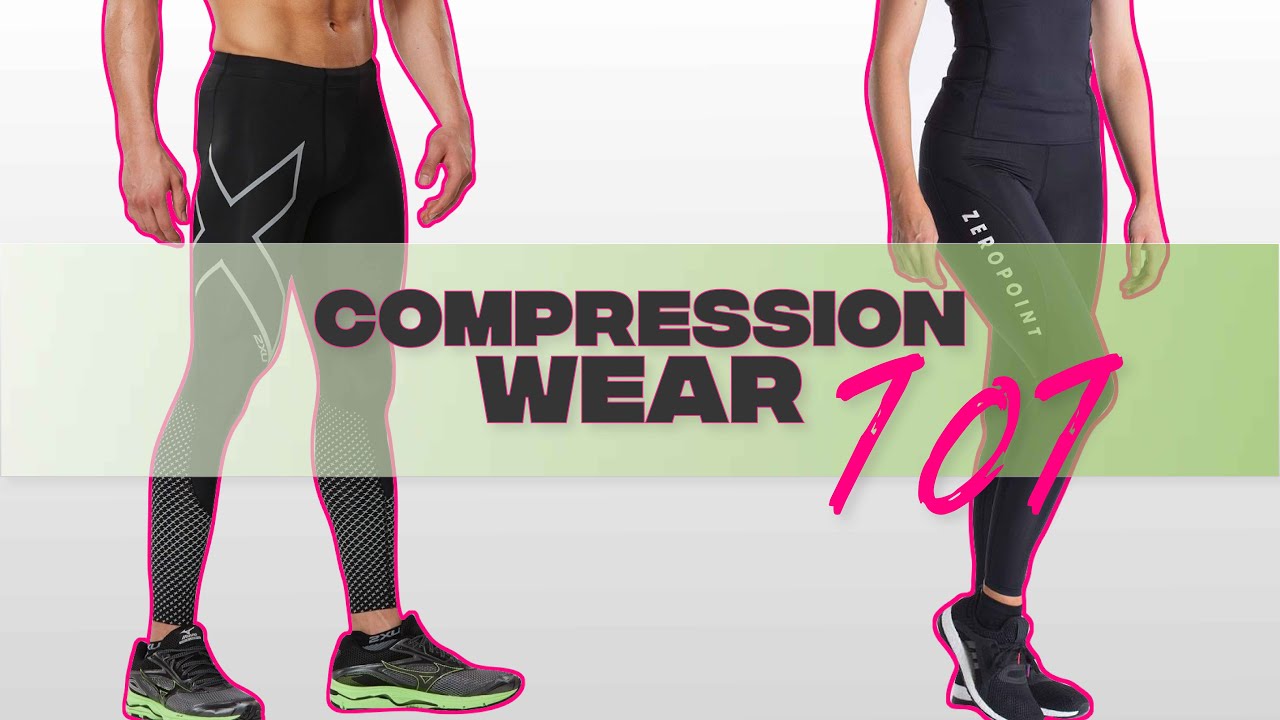Compression fabric is a revolutionary material that will transform the way you experience physical activity. Designed with cutting-edge technology, this fabric offers unmatched support, comfort, and performance-enhancing benefits. Whether you’re an athlete, a fitness enthusiast, or simply someone who wants to take care of their body, compression fabric is a game-changer. Its unique properties provide targeted compression, which helps improve blood circulation and oxygen delivery to your muscles, reducing fatigue and enhancing your overall endurance. The compression fabric also offers superior moisture-wicking capabilities, keeping you dry and comfortable even during the most intense workouts. Additionally, its four-way stretch feature ensures a snug fit that moves with your body, allowing for unrestricted movement and flexibility. Say goodbye to discomfort and hello to a new level of performance with compression fabric. Whether you’re hitting the gym, going for a run, or engaging in any physical activity, this innovative fabric will provide the support and comfort you need to reach your full potential. Upgrade your workout gear today and experience the incredible benefits of compression fabric.

Compression Fabric: Enhancing Performance and Recovery
In the world of athletic wear, compression fabric has become increasingly popular for its ability to enhance performance and aid in recovery. Whether you’re an elite athlete or a casual exerciser, understanding the benefits of compression fabric can help you make informed choices when it comes to your workout gear. In this article, we will explore the science behind compression fabric and how it can positively impact your athletic pursuits.
What is Compression Fabric?
Compression fabric is a specialized type of fabric that applies pressure to specific areas of the body. This pressure helps improve blood circulation, reduce muscle vibration, and provide support to the muscles. It is typically made from a blend of synthetic fibers, such as nylon and spandex, which offer elasticity and durability.
The Benefits of Compression Fabric
1. Enhanced Performance:
When you engage in physical activity, your muscles generate vibrations that can lead to fatigue and decreased performance. Compression fabric helps minimize these vibrations by providing support to the muscles, enabling you to perform at your best for longer periods. Additionally, the improved blood circulation that compression fabric offers can enhance oxygen and nutrient delivery to the muscles, further optimizing performance.
2. Quicker Recovery:
After a strenuous workout, your muscles need time to recover and repair. Compression fabric aids in this recovery process by increasing blood flow and reducing inflammation. The pressure applied by the fabric helps flush out waste products, such as lactic acid, which can cause muscle soreness. By wearing compression fabric during recovery, you can potentially reduce muscle soreness and expedite the healing process.
3. Injury Prevention:
Compression fabric provides stability to the joints and muscles, reducing the risk of injuries during physical activity. The snug fit of compression garments helps improve proprioception, or the body’s awareness of its position in space. This heightened proprioception can enhance balance and coordination, reducing the likelihood of accidents or missteps.
4. Temperature Regulation:
One of the lesser-known benefits of compression fabric is its ability to regulate body temperature. The fabric’s tight fit creates a microclimate between the skin and the fabric, which can help keep the body cool during hot weather and warm during colder temperatures. This temperature regulation can contribute to overall comfort and performance during exercise.
5. Improved Recovery:
Not only does compression fabric aid in active recovery immediately after exercise, but it can also be beneficial during passive recovery, such as sleep. Wearing compression garments during sleep can help further enhance blood flow and reduce muscle stiffness, allowing for a more productive recovery period. This makes compression fabric an excellent choice for athletes looking to optimize their recovery process.
Choosing the Right Compression Fabric
When selecting compression fabric, it’s important to consider a few key factors:
1. Compression Level:
Compression garments come in various levels of pressure. A higher compression level provides more support but may feel tighter. Consider the type of activity you’ll be engaging in and consult with a professional, if needed, to determine the appropriate compression level for your needs.
2. Fit:
Compression garments should fit snugly but not restrict movement or cause discomfort. Pay attention to the sizing charts provided by manufacturers to ensure you choose the correct size for your body. Trying on different brands and styles can also help you find the perfect fit.
3. Quality:
Investing in high-quality compression fabric is crucial to ensure durability and effectiveness. Look for reputable brands that use high-performance materials and have positive customer reviews. While they may be pricier, the longevity and benefits they provide make them a worthwhile investment.
In Conclusion
Compression fabric has become a game-changer in the world of athletic wear, offering numerous benefits for performance and recovery. From enhanced performance and quicker recovery to injury prevention and temperature regulation, compression fabric can be a valuable addition to your workout gear. By understanding the science behind compression fabric and considering key factors when choosing the right garments, you can optimize your athletic pursuits and enjoy the benefits that compression fabric has to offer.
“The Ultimate Guide to Compression Wear: Unveiling the Secrets of Performance-Boosting Attire”
Video Source : FittDesign Studio
List of Compression Fabric
Compression Fabric
| Feature | Description |
|---|---|
| Material | Compression fabric is typically made from a blend of high-quality synthetic fibers such as spandex, nylon, and polyester. These materials offer excellent elasticity, durability, and moisture-wicking properties. |
| Compression Level | The compression level of the fabric determines its ability to provide graduated pressure to specific muscle groups. This promotes better blood circulation, reduces muscle fatigue, and aids in faster recovery. |
| Seamless Construction | Many compression fabrics feature seamless construction, which eliminates irritating seams that can rub against the skin during physical activities. This ensures maximum comfort and prevents chafing or skin irritation. |
| Breathability | Compression fabrics are designed to offer optimal breathability. They allow air to circulate freely, keeping the body cool and dry during intense workouts. This prevents the accumulation of sweat, odor, and bacteria, ensuring a fresh and comfortable experience. |
| Compression Zones | Compression fabrics often incorporate strategically placed compression zones to target specific muscle groups. By applying varying levels of pressure, these zones enhance muscle stability, promote proper alignment, and reduce the risk of injuries. |
| UV Protection | Some compression fabrics are equipped with built-in UV protection, shielding the skin from harmful ultraviolet rays. This feature is particularly beneficial during outdoor activities, helping to prevent sunburn and long-term skin damage. |
| Moisture Management | Compression fabrics excel in moisture management, efficiently wicking away sweat from the body. By keeping the skin dry, these fabrics prevent discomfort, irritation, and the growth of bacteria, promoting overall skin health. |
As an expert, it is important to understand the characteristics and benefits of compression fabric. The materials used, such as spandex, nylon, and polyester, contribute to the fabric’s elasticity, durability, and moisture-wicking properties. Additionally, the compression level of the fabric plays a crucial role in enhancing blood circulation, reducing muscle fatigue, and aiding in faster recovery.
Seamless construction is a noteworthy feature of compression fabric. By eliminating irritating seams, it ensures maximum comfort and prevents chafing or skin irritation during physical activities. Furthermore, breathability is a key consideration in compression fabrics, allowing air to circulate freely and keeping the body cool and dry.
Compression fabrics often employ strategically placed compression zones to target specific muscle groups. This feature enhances muscle stability, promotes proper alignment, and reduces the risk of injuries. Some compression fabrics even provide built-in UV protection, safeguarding the skin from harmful ultraviolet rays during outdoor activities.
Moisture management is another significant aspect of compression fabric. By efficiently wicking away sweat, these fabrics keep the skin dry, preventing discomfort, irritation, and the growth of bacteria, ultimately promoting overall skin health.
In summary, compression fabric offers a range of benefits, including improved blood circulation, reduced muscle fatigue, enhanced comfort, breathability, targeted muscle support, UV protection, and effective moisture management. These features make compression fabric a valuable choice for athletes, fitness enthusiasts, and individuals seeking optimal performance and comfort during physical activities.

